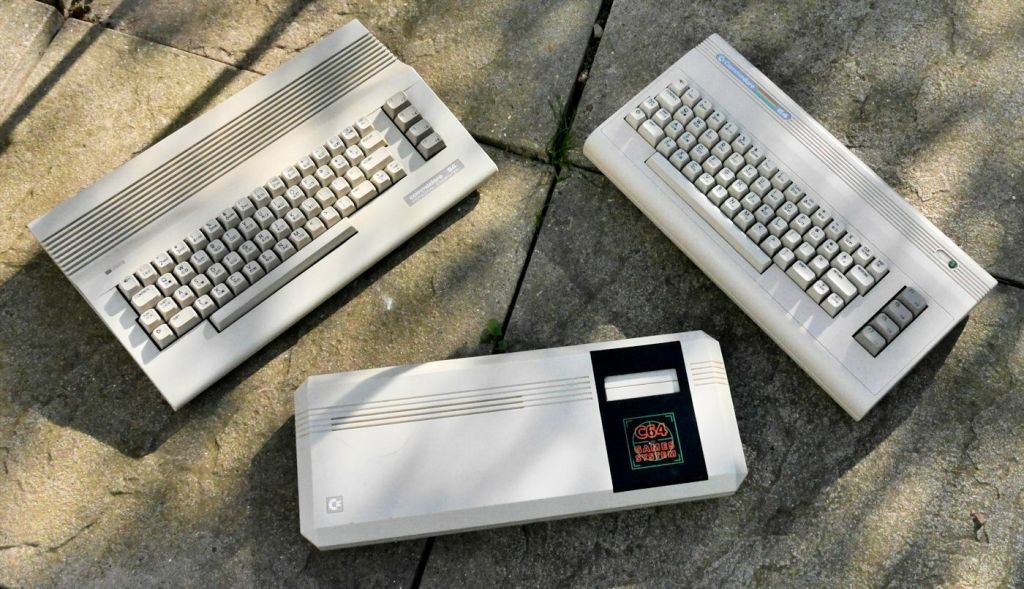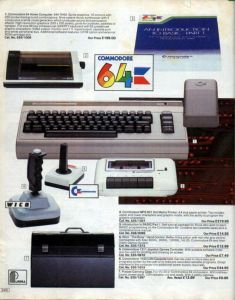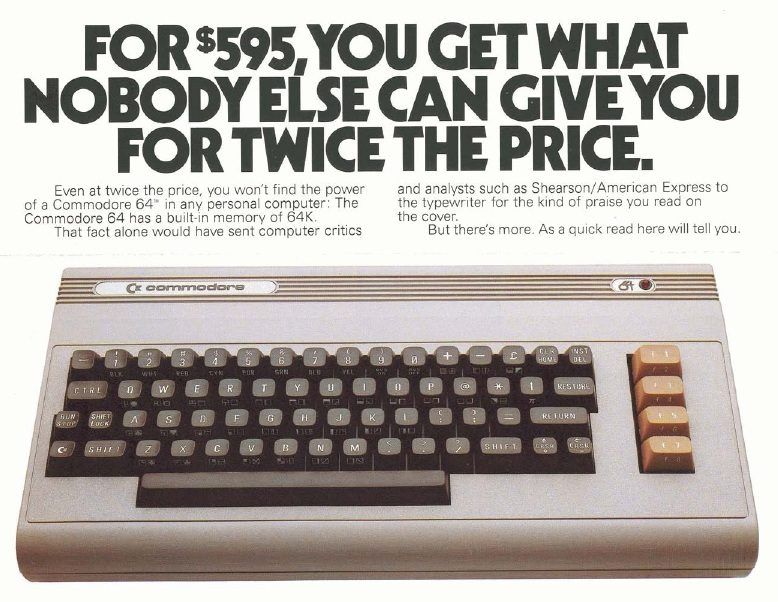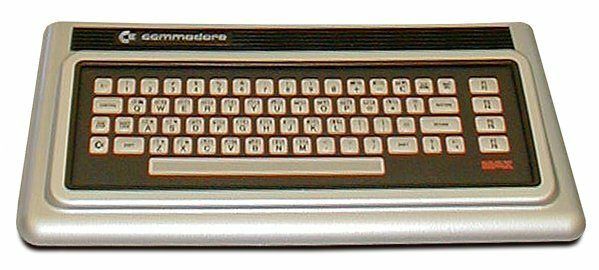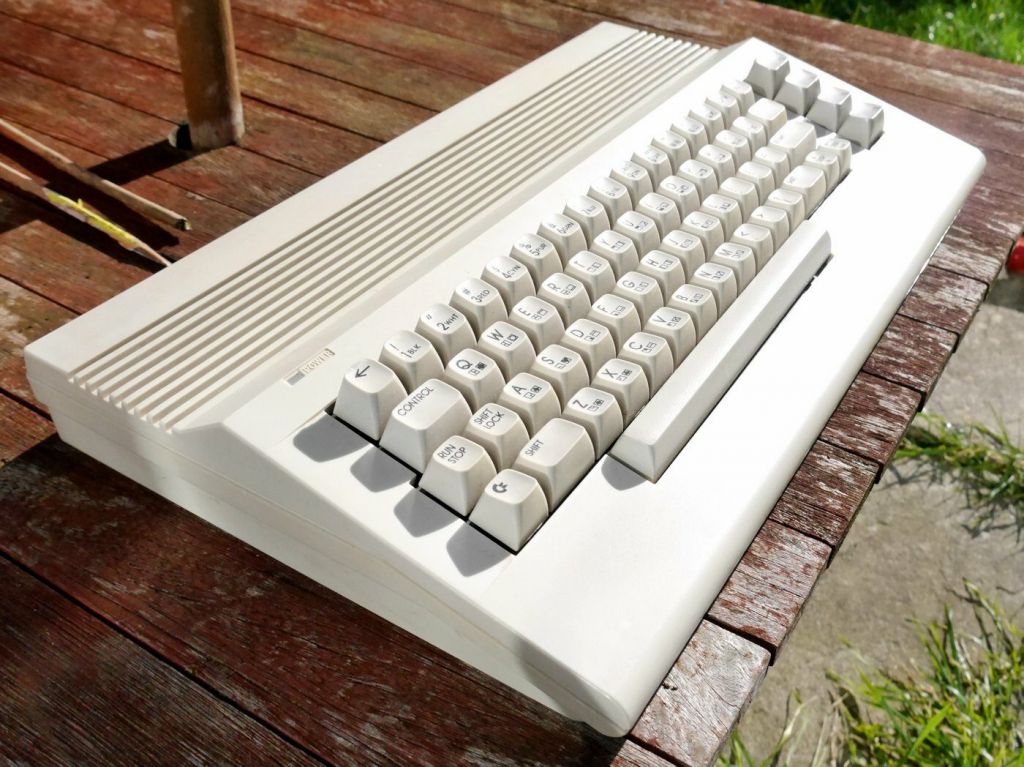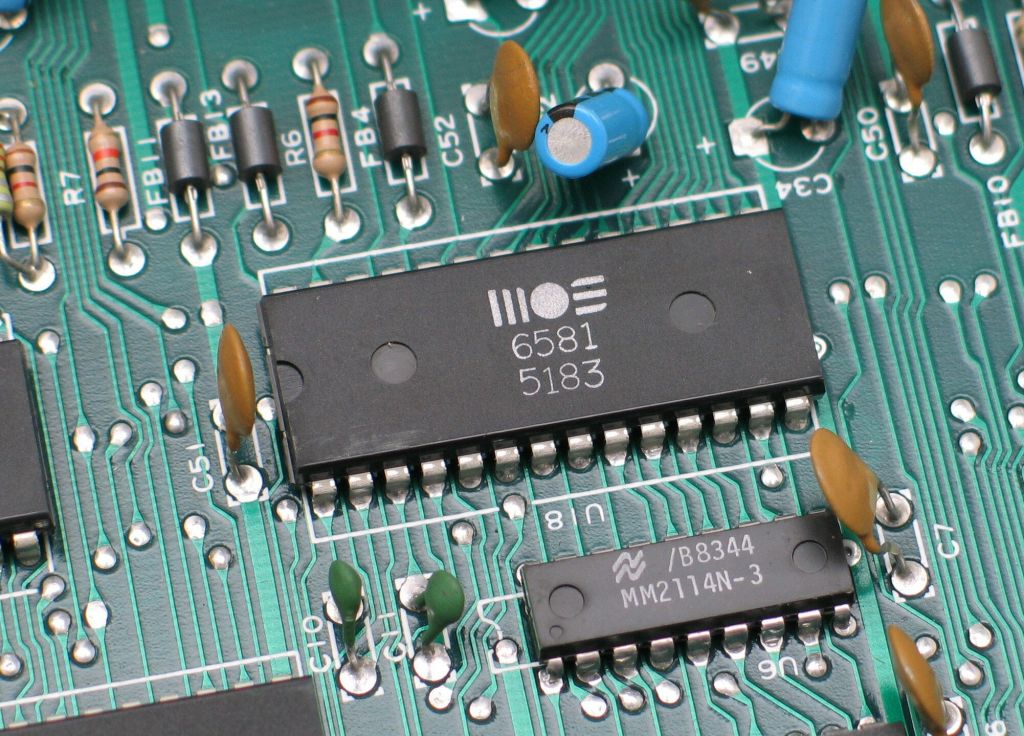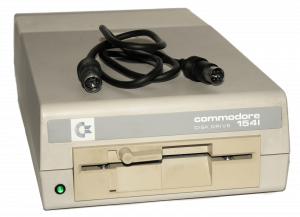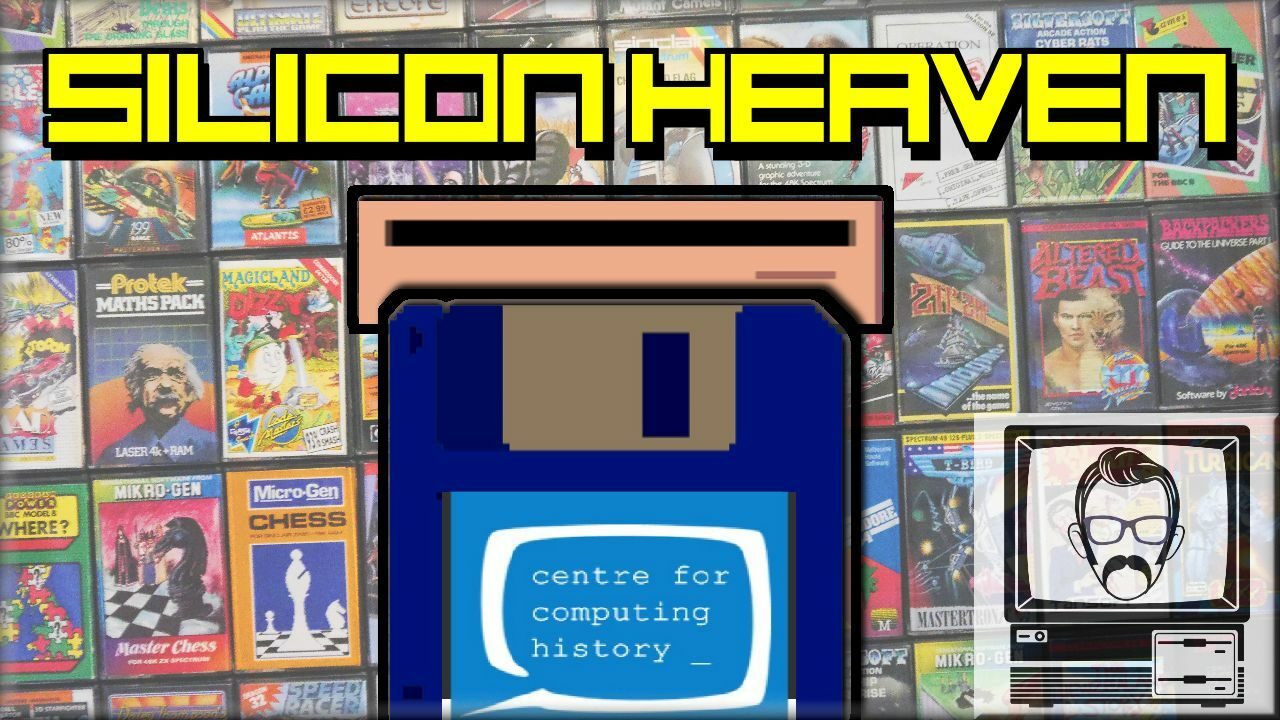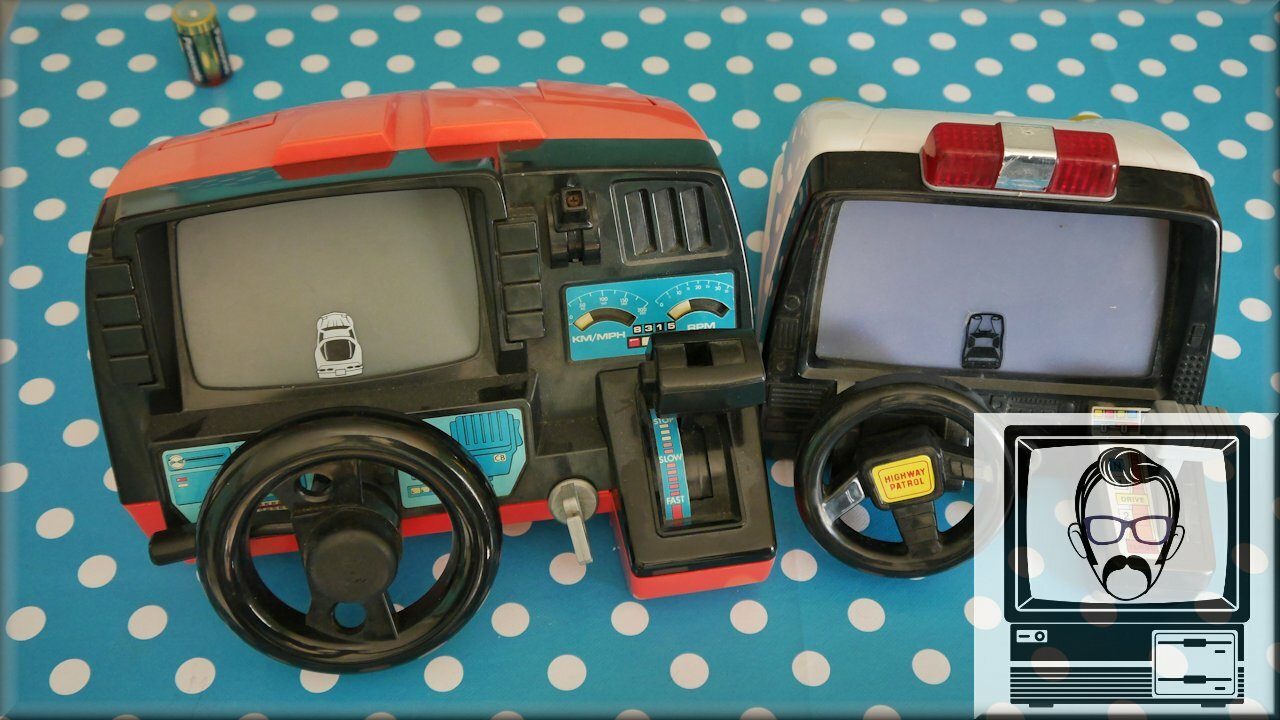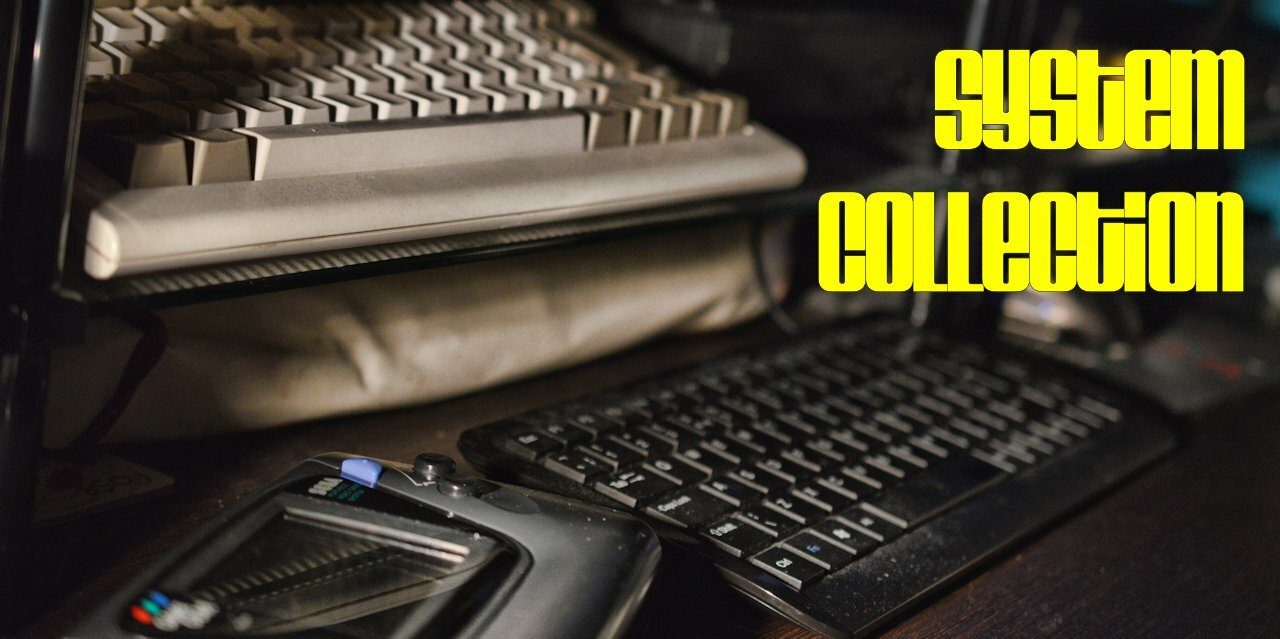The Commodore 64 was the much awaited follow up to the Vic-20, which itself superseded the Commodore PET. Initially unveiled in January 1982 by Commodore International, the machine was designed in 2 days after Jack Tramiel realised the gap in the market Commodore could fill with their recently designed new video and sound chips – the Vic II and the SID – ready to launch at the Las Vegas CES. It held an amazing production lifespan of 12 years, only being discontinued in April 1994! Also known as the C64 or the CBM 64 (CBM standing for Commodore Business Machines), it is the biggest selling computer model of all history, with an upper estimate of 17 million units sold worldwide. Everyone and their chimney sweep has owned, or at least knows of the Commodore 64. Originally, it was aimed at the business market, with it’s superior technology and expansion options and this was clearly evident in the pricing.
Large scale production of the machine took place during the latter part of 1982, with the machine holding an entry price point of $595 or £399 (equivalent to about $1,500 in today’s money), even though it only cost $135 to manufacture each unit. The machine landed in the UK in early 1983, although by then, the ZX Spectrum had obtained a strong foothold, with the 48k model retailing at only £175. This lead to the 64’s price being dropped to £229 by 1984. As the 80’s careered on, the c64 became a very strong rival to the Speccy, and both machines held a similar market share by the time the decade was out.
After it’s launch, the very technology which veered it at the business market (and the fact it had an RF output), was the reason why it was so successful in the games market. Additionally, a large part of the machine’s success, apart from those impressive capabilities, was Commodore’s decision to sell the machine in popular retail outlets, such as department stores, book stores and discount merchants. Although this was becoming fairly common place in the UK, with the Speccy starting to appear in shops such as WH Smiths, there were still plenty of missed opportunities which Commodore seized on, and this was particularly key in the US, where the Sinclair machines hadn’t really been given the grounds to make the impact they deserved.
Another key part of it’s success, despite the initial price tag, may be contributed to the aggressive marketing tactics, adopted by Commodore, which pitted the superiority of the machine against it’s rivals in a series of television commercials on both sides of the atlantic. Similar to those used by Sega some 10 years later with the launch of the Mega drive, this was probably a big driver in the playground tribe warfare between Sinclair and Commodore owners throughout the 80’s – something which was again repeated in the 90s between Sega and Nintendo owners.
Amazingly Commodore made repeated bids to discontinue the machine as early as 1984, in order to promote more powerful machines such as the Commodore 128. But demand remained stubbornly strong for the 64 Kilobyte beast, with the 128 trailing behind. Mainly as the backwards compatibility of the 128, meant that most developers just continued to push out 64kb software as it held a much larger market share. To placate their desire to continually discontinue production, Commodore eventually settled on a redesign in 1986, coming up with the (subject to opinion), sleeker Commodore 64C. The labelling following on from the initial 64 model A and 64 model B which had slightly different colouring and motherboard designs. Although the 64C came out as a replacement, the evolution of the machine from it’s characteristic bread bin shape into the new mould can be seen with some C models still bearing the older keyboard design and alternate motherboard variations. One market which was particularly opposed to the redesign (in Commodore’s eyes at least) was the German market. Rather than launching the C in Germany, Commodore instead opted to roll out the 64G – with the G standing for Gerbils…. No, clearly standing for Germany – rather than 64D which would have made more sense alphabetically. It was clearly fortunate that there hadn’t already been 7 incarnations of the 64 by this time, or the labelling could have been all sorts of crazy!
The 64G, is my particular favourite incarnation of the machine, and features the Bread bin design, but with the updated C keyboard and colour scheme. Doesn’t it just look dreamy… Mmmmmmmmmmmmmmm…. German Commodore……
By 1988, Commodore were still shipping 1.5 million units per year, and given that this was 3 years after the Amiga was released, that’s not a bad figure. However, compared to the 7 million units of Nintendo’s Entertainment System that were falling out of factory doors, clearly it was the start of the end. Although the end, in fact only came because Commodore went bankrupt, rather than actually discontinuing the machine (you can find out more about that in my Amiga CD32 video).
Something of note is the distinct differences between usage of the machine in Europe and the States. Whilst the UK and Europe were already very familiar with tape software, in the US disk based media were much more prominent. I can’t recall even seeing a machine with a disk drive until the 90’s; probably because, over here, Commodore retailed the disk drive at a higher price than the actual machine itself! But in any case, having a disk system in the UK during the 80’s was incredible. In both the senses that you had to be incredibly rich and incredibly enthusiastic to own one. With this in mind, and the fact that the UK already had numerous software houses producing games for the Speccy there are marked differences in the games and software which were available in the UK and the States. With the UK being home to clearly the best games of the time – I may be biased, but hey, research it yourself and tell me you disagree.
The 64 Family
The 64 has a large family, both extended and close. With numerous iterations of the actual 64 hardware, as well as several other machines available at around the same time, which although didn’t use the full 64 hardware set, were similar, both in shell design and componentry,
The first of these, was the Japanese MAX Machine. Launched during early 1982, only in the Eastern market, it was promoted mainly as a games machine, although it retained some computing ability. It used an earlier version of the 64 hardware, but was discontinued after only a few months due to poor sales.
In 1983, the Educator 64 made an appearnce; this was essentially a 64 in a PET enclosure, including the green monitor, and was aimed at schools who were unwilling to depart from the “proper computer” image of the earlier PET machine.
This was shortly followed by the SX-64 the following year. The first full colour “Portable” computer. Consisting of a 5″ CRT display and integrated floppy drive. This machine was again aimed at the business markets, but had limited success due to it’s sheer bulkiness and the necessity to Sellotape binoculars over your face to see the screen.
The same year, Commodore launched the Plus/4, which had higher colour abilities, increased resolutions and built in business software (yep, Commodore were sure keen to sell to businesses, in much the same way Sinclair tried). However, the machine lacked the two best parts of the 64 – hardware sprites and the incredible SID chip – another clear marketing win for Commodore there then. This also meant that the subsequent Commodore 128 launched a year later, was built on the technology of the 64, rather than the Plus/4 as had originally been intended.
Oh, let’s not forget that the Commodore 16 also launched that year. Basically, a memory crippled Plus/4, in a black Vic-20 case. It was designed to replace the Vic-20. But as the 64 was already in existence, and had filled that gap nicely, it seemed a rather odd thing to do. As did the Plus/4 in all honesty. And although hindsight is lovely, it must have been obvious at the time that it was a crock of shit idea… surely?!
The 64C came along in 1986 to jazz up the look of the machine and allow it to fit into it’s more contemporary, late 80’s surroundings (ahem). Over and above the reskin, the machine actually had new, more compact versions of the main chipset. In the states the C model was often shipped with the GUI GEOS, to allow it to try and keep up with other GUI systems such as the Mac, ST and Amiga. This wasn’t the case in the UK, as no one had disk drives still. Even with the launch of the new 1541c to compliment the new design.
In 1990. The “incredible” 64 Games System was launched. Designed to compete with the NES and Master System in the UK and Europe, it was massively underpowered even to the Japanese 8 bits. And let’s not forget that the Megadrive was already around at this time. Well played Commodore. Oh, and whilst we’re here, let’s not forget that Amstrad tried the same thing with the GX-4000. Seriously guys, what the hell were you thinking?!
Also in 1990, the C65 prototype was designed and indeed, created. With one recently selling on ebay for over 20k Euros! It had a good enough spec, although was still based on 8 bit technology, and with the Amiga already 5 years old, there seemed little point in pushing forward with it.
Hardware
What set the Commodore 64 apart from it’s rivals, was the hardware. With some of it, such as the SID chip, still widely used in the music industry to this day. Starting from the outside in, you’ll notice that the machine looks very similar to it’s predecessor, the VIC-20. And that’s not such a bad thing. Sure the case it a little Breadbin like, and you can’t exactly rest your wrists on the edge to get a natural typing position. But it did have a proper keyboard, and a lovely row of function keys alongside it. The machine also offered a great deal of expandability, with built in joystick ports, a dedicated cartridge/expansion port, a user port (for peripherals such as a modem), cassette interface, serial interface, along with monitor and RF outputs. It was a pretty versatile little unit, and little it was, in comparison to machines such as the PET or IBM Compatibles.
At the processing helm, was a MOS technologies (whom Commodore had bought a few years prior) 6510, clocked at .985Mhz in PAL regions and 1.023Mhz in NTSC. The video and sound processors are well known, and were originally designed for arcade hardware, with Jack noticing their opportunity of use at the last minute. First, we have the VIC-II handling video output, and capable of 16 colours, 8 lovely hardware sprites, smooth scrolling and a bitmap mode of 320×200 resolution. Not bad.
For sound, there is the legendary SID chip. Which apart from sounding an absolute beauty, with it’s grungy, melodic tones, possessed a 3 channel synthesizer, 8 octaves, 4 waveforms per channel and programmable filters. Which culminated into a fabulous piece of kit for developers to use.
The machine held, a specific amount of RAM, which if you don’t know the size, I suggest you go back and read the name of the machine. 38kb of this memory was addressable by BASIC. The machine could actually be expanded up toe 320kb, but this was pretty much for exclusive use with the GEOS GUI.
ROM was packaged into 20kb. With Commodore BASIC 2.0 taking up 9kb, hence why it’s disk drive commands were limited.
The machine also had an in built 24-hours (AM/PM) Time of Day clock (TOD), with programmable alarm clock. I know… crazy! Although you had to program the time each time you switched it on as there was no memory backup.
Storage was usually either provided by one of the 1541 iterations, which became increasingly smaller over the years, when compared to their initial mammoth designs. Or the familiar Commodore tape units, which featured built in tape start/stop control. Something Spectrum owners could only dream of (along with music when loading a game – that was absolutely mind blowing when I first heard it!).
As with most Commmodore machines, power was supplied by a similarly coloured brick, which evolved slightly over the ages.
Software
Software for the system was available far and wide, with lots of cross platform conversions taking place. Generally conversions to the machine from the likes of the Spectrum faired much better than they did the other way around.
The system was also commonly used to host bullentin board systems, with software packages such as Bizarre 64 and Color 64 enabling you to connect up and for the most part, download pirated software!
Anyway, let’s delve into some of the options available from it’s vast and all encompassing library.
More “Modern” Times
I actually owned by original Commodore 64 up until 1994, when I replaced it with an Atari ST. Which although late in the shelf life of the 64 (and the ST to be fair), shows the resilience of the machine. Commodore Format, the popular UK 64 magazine, in fact continued to print until October 1995, although at the end, it was literally only 1 person putting together, editing and writing the magazine; Simon Forrester – I have huge respect for that man.
In 1998, the brand was resued for the Web.it Internet computer, although it shares no compatibility with the 64 hardware.
In 2004, Tulip Computers launched the C64DTV device, which was a joystick based all in one type affair, offering 30 C64 games built into ROM. But amazingly it is actually possible to integrate the 1541 disk drive along with various other peripherals into these devices, as long as you don’t mind a bit of hacking and dabbling with the components!
More recently, in 2011 PC clones were shipped by a company licencing the Commodore trademark, Commodore USA. The C64x resembles the original 64 case design, but holds an x86 based system pre-loaded with a skinned Linux operating system.
The Commodore 64 itself still has a reasonably thriving development scene, both in terms of hardware accessory development such as the SD card drives that can mimic a 1541 drive and a whole wealth of Homebrew software titles such as Bomberland by RGCD and Temple of Ophuxoff. Also you can still buy tape and disk versions of software such as Mayhem in Monsterland. I strongly recommend you take a look, if you haven’t already done so.
Video
Take a look at the accompanying video for this article…

Nostalgia Nerd is also known by the name Peter Leigh. They routinely make YouTube videos and then publish the scripts to those videos here. You can follow Nostalgia Nerd using the social links below.

